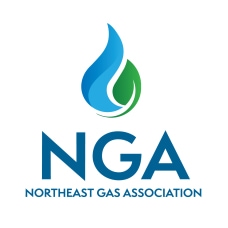Pipeline Infrastructure
SUMMARY
- Infrastructure projects continue in development on the Northeast interstate pipeline system, to transport supplies from the productive Marcellus shale gas basin in Appalachia to market centers.
- Projects rely upon customer commitments via contracts to proceed.
- Development must meet federal and state regulatory requirements.
- NGA: pipeline infrastructure development is needed in the region to meet market demand.
The Northeast's natural gas industry continues to advance infrastructure projects designed to meet market demand. These projects are part of a balanced portfolio that includes efficiency investments and maximum use of existing infrastructure. New infrastructure, appropriately designed and subject to environmental requirements, would enhance overall energy system reliability and meet the direct needs of energy consumers. The Northeast region is located adjacent to a significant source of natural gas supplies within the Marcellus Shale basin. Getting these new and economical supplies to market can be challenging in a time of siting difficulties facing energy developments of all types, but it remains important to the regional economy and environment.
Benefits of Adding Infrastructure
The Northeast natural gas pipeline system region remains constrained at several key points - particularly into the New York City area/Long Island and New England. New supplies and infrastructure will help to ease those constraints, and should help to improve the regional price situation.
Proposed projects center around bringing Marcellus Shale supplies in Appalachia to market. These projects are designed to help further increase regional natural gas capacity, deliverability, flexibility and reliability, as well as provide economic and environmental benefits to the region.
In addition, there are planned system expansions on local utility systems to meet growing demand for natural gas - at the residential and commercial/industrial levels.
Importance of Contract Commitments to
Project Advancement
The natural gas delivery system is designed to fulfill its contractual arrangements. Pipeline capacity is added to meet the needs of gas customers requesting primary firm service and who are willing to execute firm transportation contracts that pay for the required capital investment and operating costs. Without such commitments and arrangements, projects cannot proceed.
The Federal Energy Regulatory Commission (FERC) in a December 2003 report on New England's natural gas infrastructure noted:
"The adequacy of the natural gas infrastructure is based on its ability to fulfill its contractual commitments. Natural gas may be contracted on a firm or interruptible basis. Interruptible contracts are typically less expensive because capacity is only paid for if used, and the supplier or transporter may interrupt service. The natural gas infrastructure is considered adequate if firm commitments are met and terms of the interruptible contract are satisfied."
However, natural gas pipeline companies do not design or build pipeline projects based on the assumption that there will be a future market for transportation. Capital investment by pipelines must be supported by revenue certainty through firm service agreements.
The U.S. Energy Information Administration (EIA) summarizes the various options for creating additional pipeline capacity as including:
- Building an entirely new pipeline
- Adding a parallel pipeline along a segment of pipeline, called looping
- Installing a lateral or extension off the existing mainline
- Upgrading and expanding facilities, such as compressor stations, along an existing route.
What are the Stages of Pipeline Project Development? There are several stages of project development. The following is adapted from a U.S. EIA paper.
Phase I:
Market Assessment and "Open Season"
Market need and project viability assessed
Meet with stakeholders
Project proposal announced
"Open season" held to gauge level of market interest among potential customers
non-binding commitment to sign-up for a portion of the capacity rights available on the project
If enough interest is shown, sponsors arrive at preliminary design.
Phase 2:
Development of final project design and obtaining of firm financial commitments from customers; meet with stakeholders
Phase 3:
Filing with regulatory agencies - federal, state, etc.
Phase 4:
Regulatory review and issuing of necessary certificates
Phase 5:
Construction
The process from initial development to commissioning can take from 3 to 5 years, according to EIA - but the process can take even longer due to extended review processes.
Regulatory Review
The Federal Energy Regulatory Commission (FERC) is the lead permitting agency for interstate pipeline projects. FERC is an independent agency that regulates the interstate transmission of natural gas, electricity and oil.
In addition, projects require certain state (and sometimes local) permits, particularly in environmental matters.
The U.S. EIA observes: "A FERC review of an interstate pipeline project takes from 5-18 months, with an average time of 15 months. No data are available on the average time for obtaining approval from an individual State agency. Usually, approval by the regulating authority is conditional, but most often the conditions do not constitute a significant impediment. The project sponsor must then either accept or reject the conditions or reapply with an alternative plan."
Opportunities for the Region
The Northeast region remains one of the most highly-populated and most highly-constrained natural gas markets in the U.S.
The Marcellus natural gas supply resource and related infrastructure development offer opportunities for energy system reliability, energy cost competitiveness, and air quality improvements region-wide.
Developing new infrastructure in the region is challenging, for traditional energy supplies as well as for renewables. A balancing of interests and an openness to dialogue remain an important part of all project considerations.

